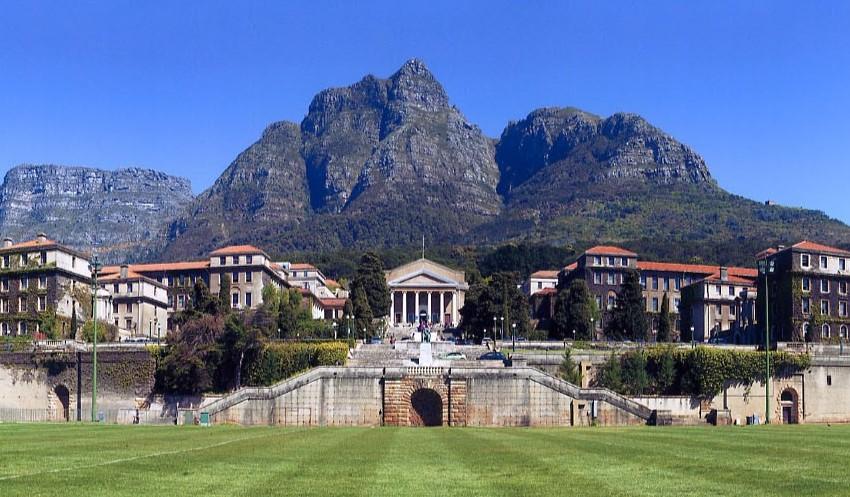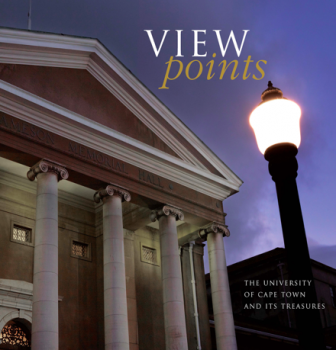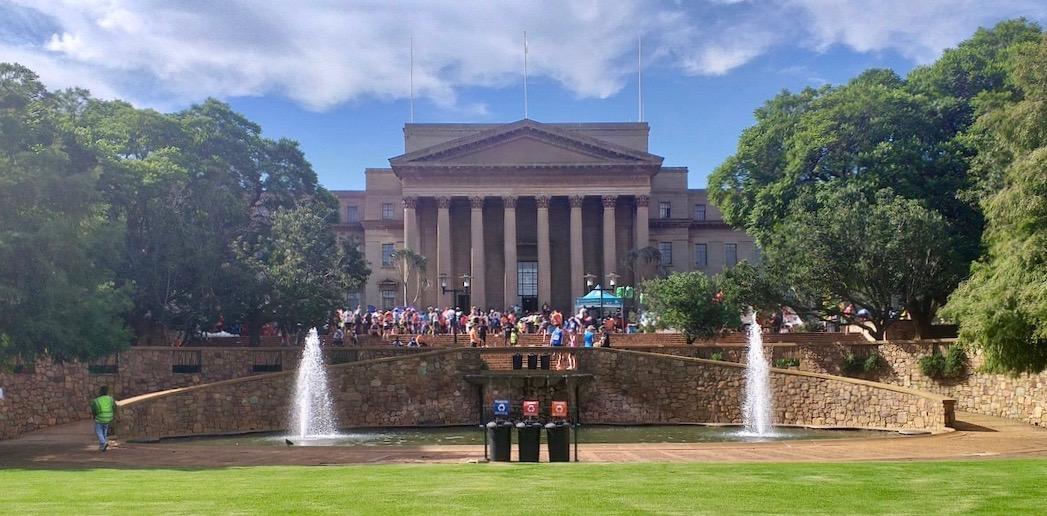
It is often forgotten that Universities are custodians and repositories of many fine collections and treasures. In most disciplines there has been someone with a collecting bent or driven by a particular research project and this has motivated the desire to gather, study, analyse, explain and preserve all sorts of objects from indigenous musical instruments to botanical specimens. Libraries conserve rare early books, documents and Africana maps. Often collections of specimens or works of art become teaching tools. The university is seen as an enduring institution and likely to survive the fractious divisions of politics and changing tastes or fashions. Often private donors and graduates become benefactors and give valuable and valued tangible assets and objects to a university because there is the assumption that a university is a place of substance, with the resources to preserve the quaint, the curious, the valuable for edification of future generations. Presenting and preserving collections and treasures in a University setting has a mutually beneficial outcome. A collection or a museum brings international acclaim and grows the reputation of the University while the imprimatur and stamp of approval by the Institution on a particular object demonstrates that this particular art work is worthy of enduring ownership.
This book is a well designed coffee table book filled with luscious illustrations of works to be found in UCT's special collections: the Kirby musical instruments, the Irma Stern collection, libraries, the photographic archives and cartographic archive. It is a celebratory book. Collections highlight both the disciplinary strengths of the University and the serendipitous keeping of past curiosities. Collecting within a university is something that happens consciously, with decisions taken to purchase a particular art work, or unconsciously when the hoarding of curiosities in one era becomes the making of a donated collection several decades later.
Njabulo Ndebele, former Vice chancellor and Principal of UCT, introduces the volume with a thoughtful introductory chapter written in 2013 that already signals that there was a rumbling of controversy about the symbolism and presence of Rhodes, the bequest of his land and the dominating presence of the 1934 Walgate statue of Rhodes. Ndebele argues that while Rhodes' absence may be desired, it is a reminder that although some of the treasures of UCT may revive painful happenings of the past they should be treasured nonetheless. The reflective answers to the question 'How does the past become available?', points to the importance of preserving, presenting and reinterpreting collections and treasures. It is perhaps unfortunate that the campaign to shift, remove or eliminate the statue of Rhodes and to rearrange and reinterpret history should have followed the launch of this particular book, but book and campaign remind us that the artifacts of the past need to be ready for a fluidity of reevaluation. Nothing, even treasures are fixed in time, but perhaps this book may fall into the hands of the student Chumani Maxwele who defaced the Rhodes statue and become part of his education and inspire him to go in search of many other fine UCT treasures and collections.
Book Cover
The photographic essay on UCT's architecture of the Rondebosch estate, recalls that the design of the main campus by Joseph Solomon capitalized on the visual drama of the Table Mountain site on land bequeathed by Cecil John Rhodes. There is more than a touch of public relations and some less than subtle marketing in the photo essay on the UCT community at work and play; it is the intellectual talent of UCT staff and students which are the lifeblood and treasures of note but this chapter belongs better in a marketing campaign.
The Kirby collection of African Musical Instruments was purchased by UCT from the Kirby family is the 1980s. This was a smart move as Kirby spent his career at the University of the Witwatersrand, until his retirement in 1952 and built up his collection while at Wits and here is a neat example of inter university rivalry in the collecting stakes. It is a fine collection to have preserved and conserved and highlights the living life of a collection that is accessible to music students.
Wits University (The Heritage Portal)
There are a number of good books on Irma Stern so the chapter of selected illustrations of her paintings from the Irma Stern Museum, established in 1971 in her former home and studio and now a preeminent UCT collection, will surely draw students and readers to explore this wonderful Museum (one of my personal favourites). UCT's art collection assembled since 1920 and still growing is displayed in the many buildings and spaces on the Campus and art works showcased in Viewpoints emphasize both the eclectic range and the contemporary direction of the collection. Another collection taking pride of place at UCT is the Bolus Herbarium and Library dating from 1911, which is of both national and international importance. The UCT Libraries' special collections are superb treasure troves ranging from architectural drawings, to Olive Schreiner letters, rare books and contemporary political cartoons.
The Bleek and Lloyd archival collection is known through Pippa Skotnes's book Claim to the Country. It was a unique research project to record and document the language and mythologies of the KhoeSan or Bushmen peoples of the late nineteenth and early twentieth centuries. The custodial and research roles of a university were anchored in this collection. The historical maps of Africa owned by UCT illustrated in Viewpoints give a glimpse into a more substantial collection and should have been given more detailed treatment. In contrast, the photographic archive must be a favourite of the editor, as the iconic images of quiet moments and hectic political events have been given considerable space. My own favourite section of the book is the chapter on the Hidden Treasures, those curiosities and objects found in departmental cabinets that somewhat nostalgically remind one that treasures are defined by the people who have collected them and their inheritors who acknowledge and recognize the ongoing value of material things, whether a dictionary, a set of postage stamps, a stuffed bird, a preserved pangolin, a 1901 Benz car or an Ndebele traditional costume. It's a final reminder that treasures come in many forms and their survival from the past is cause to reflect on the possible artifacts from our own age that could become the treasures of the future to give a sense of heritage and history."
Review copy supplied by UCT press to The Heritage Portal.
Main image: Older photo of UCT via Don Shaw
Kathy Munro is an Honorary Associate Professor in the School of Architecture and Planning at the University of the Witwatersrand. She enjoyed a long career as an academic and in management at Wits University. She trained as an economic historian. She is an enthusiastic book person and has built her own somewhat eclectic book collection over 40 years. Her interests cover Africana, Johannesburg history, history, art history, travel, business and banking histories. She researches and writes on historical architecture and heritage matters. She is a member of the Board of the Johannesburg Heritage Foundation and is a docent at the Wits Arts Museum. She is currently working on a couple of projects on Johannesburg architects and is researching South African architects, war cemeteries and memorials. Kathy is a member of the online book community the Library thing and recommends this cataloging website and worldwide network as a book lover's haven.


